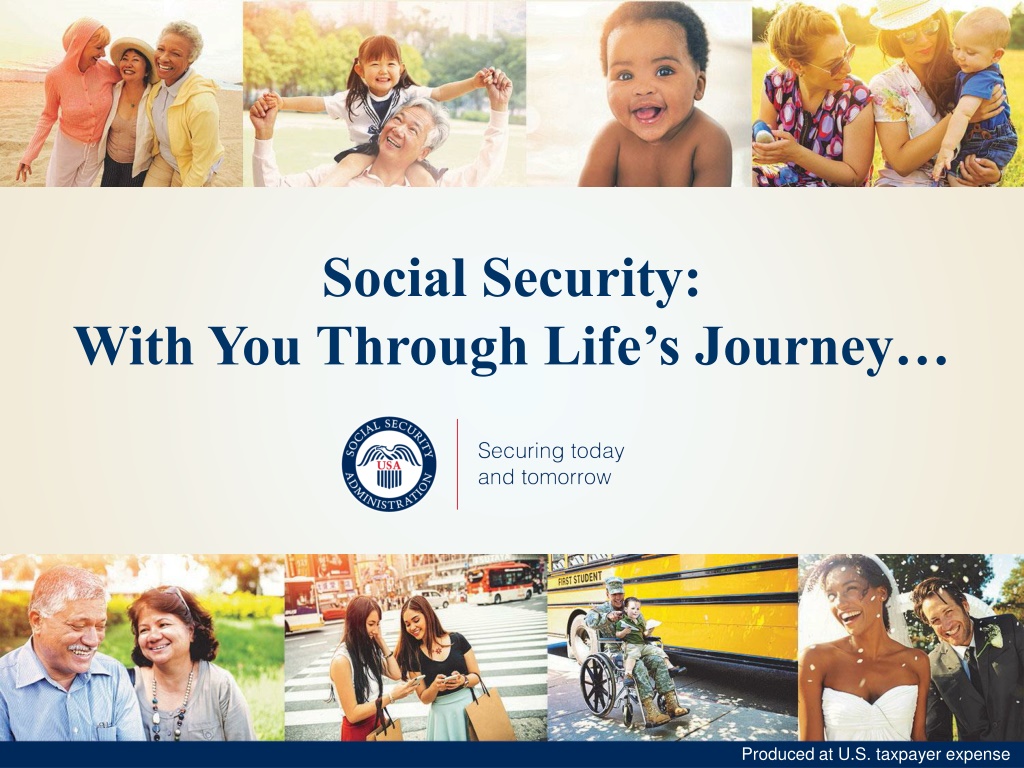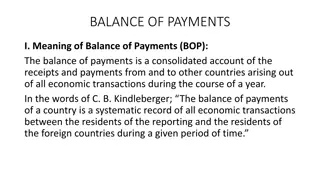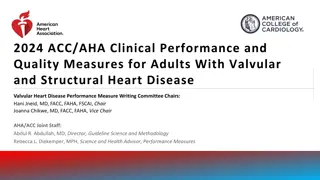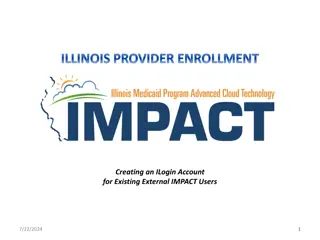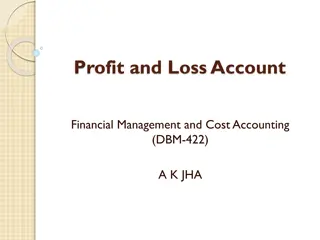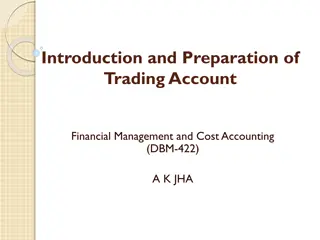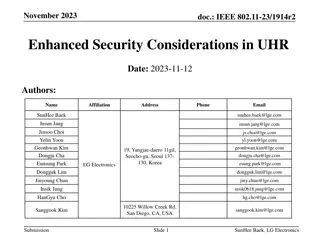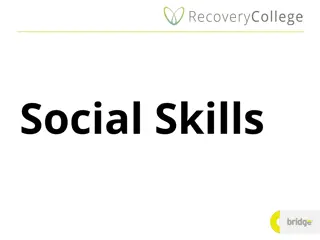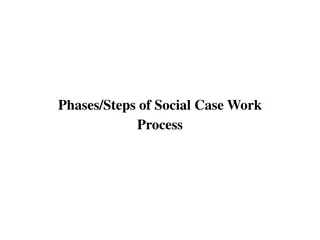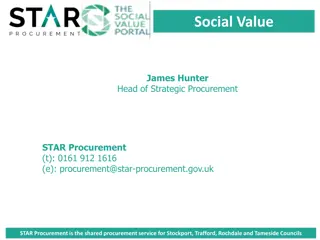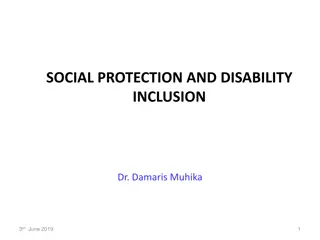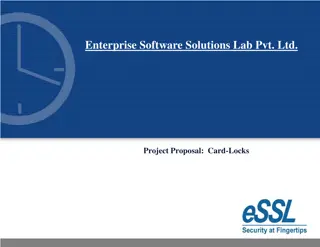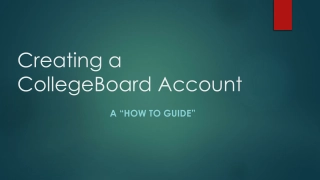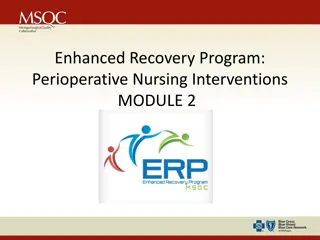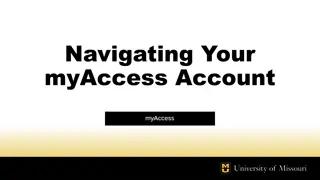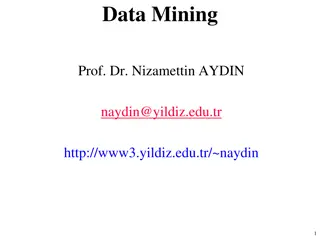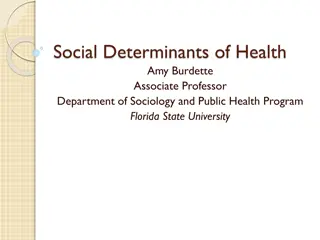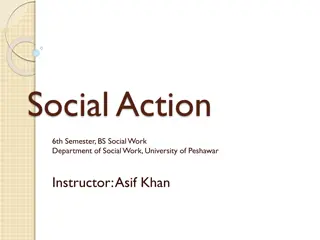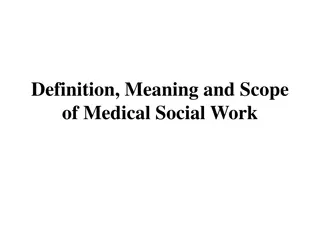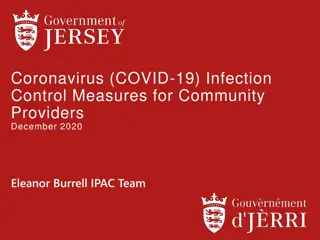Enhanced Security Measures for Your Social Security Account
Explore the enhanced security features implemented by Social Security for your account, providing a second method of identification during registration and login. With options of using your cell phone or email, these measures ensure a safer online experience each time you access your account, enhancing protection for your personal information.
Download Presentation

Please find below an Image/Link to download the presentation.
The content on the website is provided AS IS for your information and personal use only. It may not be sold, licensed, or shared on other websites without obtaining consent from the author. Download presentation by click this link. If you encounter any issues during the download, it is possible that the publisher has removed the file from their server.
E N D
Presentation Transcript
Social Security: With You Through Life s Journey SocialSecurity.gov Produced at U.S. taxpayer expense
Were With You Through Lifes Journey SocialSecurity.gov
my Social Security socialsecurity.gov/myaccount SocialSecurity.gov
my Social Security Services If you do not receive benefits, you can: Request a replacement Social Security card if you meet certain requirements; Check the status of your application or appeal; Get a benefit verification letter as proof that you are not getting benefits; Get your Social Security Statement to review: o Estimates of your future retirement, disability, and survivor benefits; o Your earnings once a year to verify the amounts that we posted are correct; and o The estimated Social Security and Medicare taxes you ve paid. SocialSecurity.gov
my Social Security Services If you receive benefits or have Medicare, you can: Request a replacement Social Security card if you meet certain requirements; Get a benefit verification letter as proof that you are getting benefits; Check your benefit and payment information and your earnings record; Change your address and phone number; Start or change direct deposit of your benefit payment; Request a replacement Medicare card; and Get a replacement SSA-1099 or SSA-1042S for tax season. SocialSecurity.gov
Enhanced Security for your my Social SecurityAccount We recently added a second method to check the identification of account holders when you register or sign in. This is in addition to the first layer of security, your username and password. You will be able to choose either your cell phone or your email address as your second identification method. SocialSecurity.gov
Enhanced Security for your my Social SecurityAccount cont. Each time you sign in to your account, you will complete two steps: Step 1: Enter your username and password. Step 2: Enter the security code we send by text message or email, depending on your choice (cell phone provider text message and data rates may apply). If a user does not have a text-enabled cell phone, or does not wish to provide their cell phone number, they will need to use their email address as a second identification method instead. SocialSecurity.gov
How to Open a my Social SecurityAccount 1 Visit socialsecurity.gov/myaccount Select: Sign In or Create an Account. 2 Provide some personal information to verify your identity. Choose a username and password, then select how you would like to receive a one-time security code to create your account. 3 4 No matter what type of device you use, the my Social Securityportal will automatically re-adjust to fit the appropriate screen size, providing you full, easy-to-use access to your personal account! SocialSecurity.gov
Social Security Beneficiaries 4.4 million Widows/ Widowers 8.9 million Disabled Workers, 1.9 million Dependents 1.9 million Children 41 million Retired Workers 3 million Dependents 12/2017 SocialSecurity.gov
We Wouldnt Miss Your Retirement Party SocialSecurity.gov
How Do You Qualify for Retirement Benefits? By earning credits when you work and pay Social Security taxes You need 40 credits (10 years of work) and you must be 62 or older Each $1,320 in earnings gives you one credit You can earn a maximum of 4 credits per year Note: To earn 4 credits in 2018, you must earn at least $5,280. SocialSecurity.gov
Retirement Estimator Gives estimates based on your actual Social Security earnings record You can use the Retirement Estimator if: You have enough Social Security credits at this time to qualify for benefits and You are not: Currently receiving benefits on your own Social Security record; Waiting for a decision about your application for benefits or Medicare; Age 62 or older and receiving benefits on another Social Security record; or Eligible for a Pension Based on Work Not Covered By Social Security. socialsecurity.gov/estimator SocialSecurity.gov
How Social Security Determines Your Benefit Benefits are based on earnings Step 1 -Your wages are adjusted for changes in wage levels over time Step 2 -Find the monthly average of your 35 highest earnings years Step 3 -Result is average indexed monthly earnings SocialSecurity.gov
2018 Retirement Benefit Formula $ If your average monthly earnings are = $5,500 Then your monthly benefit would be = $2,260 Average Monthly Earnings = $5,500 90% of First.................................................... $895 is $805 32% of Earnings over $895 through $5,397... $4,502 is $1,440 ($5,397-$895=$4,502) 15% of Earnings over $5,397........................ $103 is $15 $5,500 is $2,260 *Payments rounded to whole dollar amounts SocialSecurity.gov
Online Calculators WEP Online Life ExpectancyCalculator Retirement Early or LateBenefits for Spouses QuickEstimator GPO DetailedAge Earnings Test SocialSecurity.gov
What Is the Best Age to Start Receiving Social Security Retirement Benefits? Age You Choose to Start Receiving Benefits Note: This example assumes a benefit of $1,000 at a full retirement age of 66 SocialSecurity.gov
A $1000 retirement benefit taken at age 62 would be reduced by A $500 spouse benefit taken at age 62 would be reduced by Year of Birth Full Retirement Age 1943-1954 1955 66 66 and 2 months 25% 25.83% 30% 30.83% 1956 66 and 4 months 26.67% 31.67% 1957 66 and 6 months 27.5% 32.5% 1958 66 and 8 months 28.33% 33.33% 1959 66 and 10 months 29.17% 34.17% 1960 + 67 30% 35% SocialSecurity.gov
Working While Receiving Benefits If you earn more, some benefits will be withheld $1 for every $2 If you are You can make up to Under Full Retirement Age The Year Full Retirement Age is Reached Month of Full Retirement Age and Above Note: If some of your retirement benefits are withheld because of your earnings, your benefits will be increased starting at your full retirement age to take into account those months in which benefits were withheld. $17,040/yr. $45,360/yr. before month of full retirement age No Limit $1 for every $3 No Limit SocialSecurity.gov
What Income Counts? Gross Wages from employment and/or Net Earnings from self employment Income that Does NOT Count as Earnings: Inheritance payments Interest and dividends Pensions Capital gains Income from investments Other sources SocialSecurity.gov
Medicare Part A = Hospital Insurance Part B = Medical Insurance Part C = Medicare Advantage Plans Part D = Prescription Drug Plans Visit Medicare.gov for details SocialSecurity.gov
Age 65 After 24 months of SSDI ALS Medicare Eligibility Kidney failure SocialSecurity.gov
Initial Enrollment Period Begins 3 months before your 65th birthday and ends 3 months after that birthday Medicare Enrollment Special Enrollment Period If 65 or older and covered under a group health plan based on your or your spouse s current work. General Enrollment Period January 1 March 31 SocialSecurity.gov
Medicare Part B Initial Enrollment Period If you enroll in this month of your initial enrollment period: One to three months before you reach age 65 Then your Part B Medicare coverage starts: The month you reach age 65 The month you reach age 65 One month after the month you reach age 65 One month after you reach age 65 Two months after the month of enrollment Two or three months after you reach age 65 Three months after the month of enrollment SocialSecurity.gov
The standard Part B premium for 2018 is $134.00. If you re single and file an individual tax return, or married and file a joint tax return: Modified Adjusted Gross Income Part B monthly premium amount Prescription drug coverage monthly premium amount Your plan premium 2018 standard premium $134.00 Individuals with a MAGI of $85,000 or less Married couples with a MAGI of $170,000 or less Standard premium + $53.50 Individuals with a MAGI above $85,000 up to $107,000 Your plan premium + $13.00 Married couples with a MAGI above $170,000 up to $214,000 Standard premium + $133.90 Individuals with a MAGI above $107,000 up to $133,500 Your plan premium + $33.60 Married couples with a MAGI above $214,000 up to $267,000 Standard premium + $214.30 Individuals with a MAGI above $133,500 up to $160,000 Your plan premium + $54.20 Married couples with a MAGI above $267,000 up to $320,000 Standard premium + $294.60 Individuals with a MAGI above $160,000 Your plan premium + $74.80 Married couples with a MAGI above $320,000 SocialSecurity.gov
Extra Help Program Medicare beneficiaries may qualify for Extra Help with their Medicare prescription drug plan costs. Find out if you qualify at socialsecurity.gov/extrahelp SocialSecurity.gov
Medicare Applications If you already have Medicare Part A and wish to add Medicare Part B, simply take or mail forms CMS 40-B and CMS-L564 to your local Social Security office socialsecurity.gov/medicare/apply.html SocialSecurity.gov
1-800-MEDICARE or Medicare.gov SocialSecurity.gov
Did You Know? As of December 2017, 3.1 million dependents of retired workers were receiving 2.2 billion dollars in Social Security benefits each month. At the same time, 1.7 million dependents of disabled workers were receiving 620 million dollars in monthly Social Security benefits. socialsecurity.gov/planners SocialSecurity.gov
Auxiliary Benefits for Children A child must have: The child must also be: Unmarried; Younger than age 18; 18-19 years old and a full- time student (no higher than grade 12); or 18 or older and disabled. (The disability must have started before age 22.) A parent who s disabled or retired and entitled to Social Security benefits; or A parent who died after having worked long enough in a job where they paid Social Security taxes. SocialSecurity.gov
Spousal Benefits Benefit is 50% of worker s unreduced benefit Reduction for early retirement If spouse s own benefit is less than 50% of the worker s, the benefits are combined Does not reduce payment to the worker SocialSecurity.gov
A $1000 retirement benefit taken at age 62 would be reduced by A $500 spouse benefit taken at age 62 would be reduced by Year of Birth Full Retirement Age 1943-1954 1955 66 66 and 2 months 25% 25.83% 30% 30.83% 1956 66 and 4 months 26.67% 31.67% 1957 66 and 6 months 27.5% 32.5% 1958 66 and 8 months 28.33% 33.33% 1959 66 and 10 months 29.17% 34.17% 1960 + 67 30% 35% SocialSecurity.gov
Benefits for Divorced Spouses You can receive benefits on your ex-spouse's record (even if he or she has remarried) if: You are unmarried; You are age 62 or older; Your ex-spouse is entitled to Social Security retirement or disability benefits; and The benefit you are entitled to receive based on your own work is less than the benefit you would receive based on your ex-spouse's work. Note: Marriage must have lasted 10 years or longer SocialSecurity.gov
Deemed Filing If you become eligible for Social Security benefits both as a retiree and as a spouse (or divorced spouse), and you want to go ahead and claim your benefits, you must file for both benefits. Applies at any age for people who turned age 62 after January 1, 2016. Note: There are two exceptions. socialsecurity.gov/planners/retire/deemedfaq.html SocialSecurity.gov
Voluntary Suspension If you take your retirement benefit and then ask to suspend it to earn delayed retirement credits, your spouse or dependents (excluding divorced spouses) generally will not be able to receive benefits on your Social Security record while your own benefits are suspended. socialsecurity.gov/planners/retire/suspendfaq.html SocialSecurity.gov
Were There If You Lose Your Soulmate SocialSecurity.gov
Survivor Eligibility Factors Child Can receive benefit if not married and is under age 18 (or under age 19 if still in high school) Can receive benefits beyond age 18 if not married and was disabled before age 22 Widow / Widower Can get full benefits at full retirement age or reduced benefits at age 60 or as early as age 50 if disabled or at any age if caring for child under 16 or a disabled child Disabled Child SocialSecurity.gov
Survivor Benefits When you pass away, your surviving spouse can: Receive 100% of your full benefit if full retirement age; or At age 60, receive 71.5% of your full benefit and increases each month you wait up to 100% if you start at full retirement age; or Claim survivor benefits at any age between 60 and full retirement age. SocialSecurity.gov
Other Survivor Benefits Parents Benefits For a parent who is age 62 and was receiving at least one-half of his or her financial support from the son or daughter who died. Lump Sum Death Payment A surviving spouse or child may receive a special lump-sum death payment of $255.00 if they meet certain requirements. socialsecurity.gov/survivors SocialSecurity.gov
Spouse (living) benefits Survivor (death) benefits Can start from age 60 to Full Retirement Age (FRA) Can start from age 62 to Full Retirement Age (FRA) 71.5% at age 60 and increases each month you wait, up to 100% if you start at FRA 50% at FRA or less if you start prior to FRA (reduction for each month you take it early) Divorced spouses qualify if marriage lasted at least 10 years and other conditions are met Divorced spouses qualify if marriage lasted at least 10 years and other conditions are met SocialSecurity.gov
Well Be Here For Your Family In The Future SocialSecurity.gov
Who Pays for Social Security? SocialSecurity.gov
Birth Rates 4 3.5 3 2.5 2 1.5 1 0.5 0 1920 1930 1940 1950 1960 1970 1980 1990 2000 2010 Source: 2017 Trustees Report Table V.A1. SocialSecurity.gov
Life Expectancy Statistics A man reaching age 65 today can expect to live, on average, until age 84.3. A woman turning age 65 today can expect to live, on average, until age 86.6. And those are just averages. About one out of every four 65- year-olds today will live past age 90, and one out of 10 will live past age 95. socialsecurity.gov/planners/lifeexpectancy.html SocialSecurity.gov
Social Security in the Future The two Social Security trust funds Old-Age and Survivors Insurance (OASI) and Disability Insurance (DI) will be able to pay all benefits in full and on time until 2034. The trust funds have reached the brink of asset reserve depletion in the past, but Congress made substantial modifications to avoid this. If Congress does not act before 2034, the trust funds will still be able to pay 77 percent of each benefit due. SocialSecurity.gov
Applying for Benefits 3 options available to apply: Online By phone 1-800-772-1213 At our office You choose the most convenient option for you! Note: Child and survivor claims can only be done by phone or in a field office (not online) at this time. SocialSecurity.gov
Were With You Through Lifes Journey SocialSecurity.gov
Social Security: With You Through Life s Journey SocialSecurity.gov Produced at U.S. taxpayer expense
Q&A session SocialSecurity.gov
